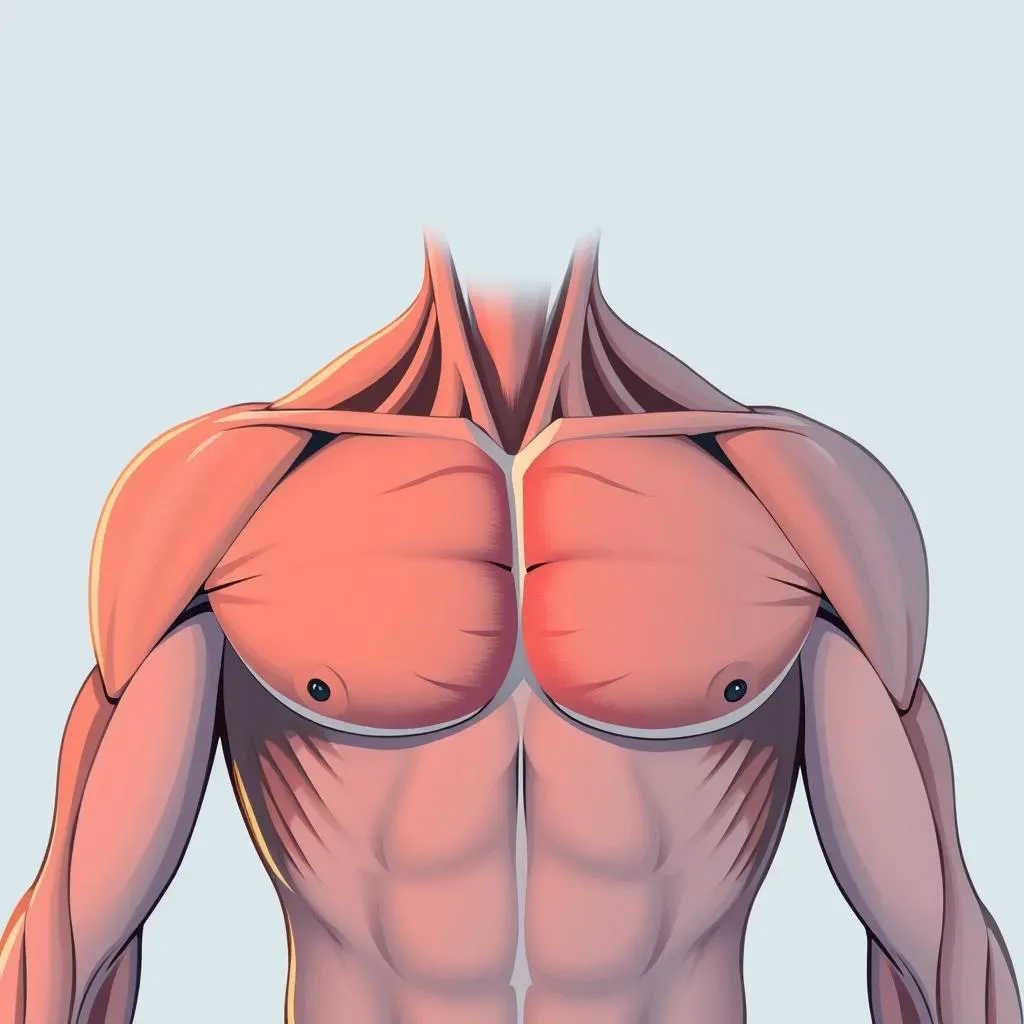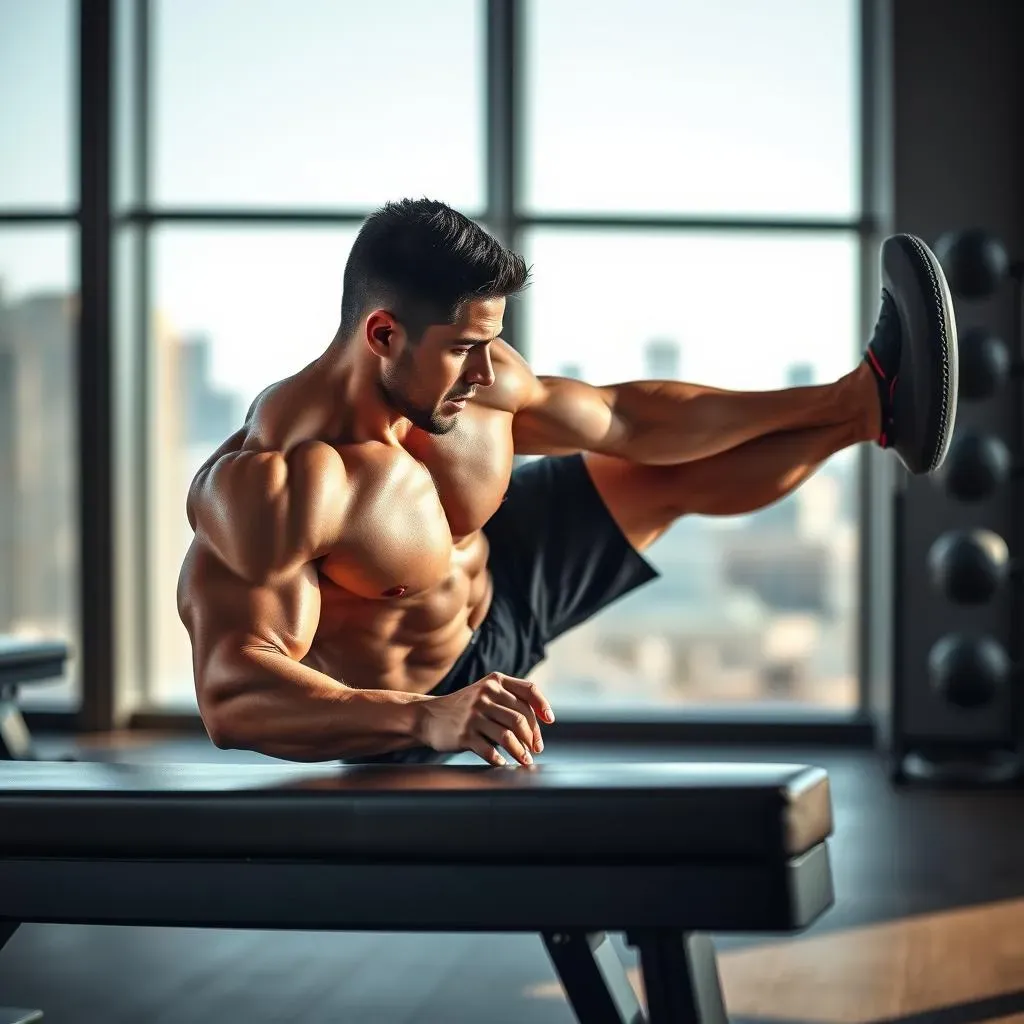Table of Contents
Ever looked in the mirror and wished for a more defined upper chest? You're not alone. Many people think you need a gym full of weights to build that area, but what if I told you, you could achieve a powerful upper chest using just your bodyweight? That's right, we're talking about the amazing world of calisthenics. This article is your guide to mastering the "calisthenics upper chest workout," showing you how to sculpt your chest without any fancy equipment. We will start by breaking down the muscles in your upper chest, then I'll walk you through some killer exercises that actually work. I'll even help you put together a routine and share some secrets to get the best results. So, forget the gym membership, let's get started building that upper chest you've always wanted, right here, right now.
Understanding Your Upper Chest Muscles for Calisthenics

Understanding Your Upper Chest Muscles for Calisthenics
The Pectoralis Major: Your Main Player
so let's talk about the star of the show: the pectoralis major. This big muscle covers most of your chest, and it’s not just one solid piece. It's like a fan, with different parts that do different things. The upper part, or the clavicular head, is what we're really after when we talk about "upper chest." It starts near your collarbone and connects to your upper arm. It helps you lift your arm up and across your body, which is super important for a lot of calisthenics moves. Think about pushing yourself up from the ground or doing dips – that’s your pec major working hard.
Now, it's easy to think of the chest as just one big muscle, but it's not. There's also the pectoralis minor, which is smaller and sits underneath the pec major. While it doesn’t contribute directly to the "look" of your upper chest, it does help with shoulder movement and stability. So, it’s good to remember that everything is connected. When you’re working your chest, you're also working your shoulders and arms, making calisthenics a super efficient way to get stronger overall. Understanding this helps you target your workout and not just randomly do exercises.
How the Upper Chest Works in Calisthenics
When you’re doing calisthenics, you're not just lifting weights; you’re moving your entire body. This means that your upper chest gets worked in a more natural, functional way. For example, when you do an incline push-up, you’re putting more emphasis on that upper chest muscle. It's the angle that matters. By changing the angle of your body, you can target different parts of your chest. This is why understanding the muscle is useful, so you can adjust your workouts accordingly. You're in control of where the effort goes.
Think of your chest muscles like a team. The upper chest is like the forward of a soccer team, it needs to be strong to perform its function. So, when you’re doing exercises like dips or push-ups, the whole team is working, but you can shift the focus to the upper chest by adjusting your body position. It’s not just about doing the exercises; it’s about doing them in a way that makes the muscle work the hardest. This understanding is what separates a good workout from a great one. Plus, it's kind of fun to be your own coach and figure out what works best for you.
Muscle | Function | Calisthenics Role |
|---|---|---|
Pectoralis Major (Upper) | Lifts arm up and across body | Primary mover in incline push-ups, dips |
Pectoralis Minor | Stabilizes the shoulder blade | Supports movement, overall stability |
Effective Calisthenics Exercises for Upper Chest Development

Effective Calisthenics Exercises for Upper Chest Development
Incline Push-Ups: Your Calisthenics Best Friend
Alright, let's get to the good stuff: exercises. First up, we've got incline push-ups. These are fantastic because they directly target your upper chest. Unlike regular push-ups, where your chest is parallel to the ground, incline push-ups have your hands on an elevated surface. This shifts the focus to your upper chest muscles, making them work harder. It's like giving that part of your chest a VIP pass to the workout party. You can use a chair, a bench, or even a sturdy box. The higher the incline, the easier the exercise becomes, so start with a lower surface and work your way up as you get stronger. It's all about finding that sweet spot that challenges you without making you feel like you're about to collapse.
The great thing about incline push-ups is how easy they are to adjust. If you are new to calisthenics, you might want to start with your hands on a wall and gradually decrease the angle as you become comfortable. Make sure you maintain a straight line from head to heels and lower your chest to the edge of your raised surface. Remember, control is key. Don't just drop down; lower yourself slowly and push back up with power. That controlled movement is what builds strength. It's not about quantity; it's about quality.
Dips: Not Just for Triceps
Next up, we have dips. Now, a lot of people think of dips as a tricep exercise, and sure, they do work your triceps, but they're also an amazing upper chest builder. It's all about leaning forward slightly. When you lean forward during dips, you shift the emphasis from your triceps to your chest muscles, and especially the upper chest. It’s like magic; just a small change in position can make a big difference. You can use parallel bars, dip bars, or even sturdy chairs. Just make sure whatever you're using is safe and stable before you start. Nobody wants a mid-workout furniture failure.
Dips are a bit more challenging than push-ups, so don't worry if you can't do a lot of reps at first. It's perfectly fine to start with assisted dips, using your feet to help you up or using an assisted dip machine if you have one. The key is to get the form right. Lower yourself slowly until your elbows are at a 90-degree angle, and then push back up. Focus on feeling the chest muscles working as you do. Dips aren't about brute force; they're about controlled movement and engaging the correct muscles. It's that mind-muscle connection that will get you results.
Exercise | Primary Muscle Target | How to Focus on Upper Chest |
|---|---|---|
Incline Push-Ups | Upper Chest | Elevate hands on a stable surface |
Dips | Upper Chest, Triceps | Lean slightly forward during the movement |
Creating Your Calisthenics Upper Chest Workout Routine

Creating Your Calisthenics Upper Chest Workout Routine
Designing Your Weekly Schedule
so you've got the exercises down, now let's talk about putting it all together. It's not just about doing random sets of push-ups and hoping for the best. You need a plan. A good starting point is to aim for working your upper chest two to three times a week. This gives your muscles enough time to recover and grow. Don’t go overboard, more isn’t always better. Think of it like this: you wouldn't try to learn a new instrument by practicing for 10 hours straight, you'd break it up into smaller, more manageable sessions. The same principle applies here. Consistency is more important than intensity, especially when you're just starting out.
When planning your routine, be sure to include rest days. Muscles grow when you're resting, not when you're working out. It's like how a plant needs time in the dark to grow. Also, don't be afraid to mix up the exercises. You could do incline push-ups one day and dips another. Variety keeps things interesting and helps your muscles develop in a balanced way. Think of it like a painter using different colors; the more variety, the more detailed and beautiful the picture. Remember, a routine that's both effective and enjoyable is the one you'll stick to.
Sample Workout Plan
Let's get real for a second, a workout plan doesn't need to be super complicated to be effective. Here is an example: Start with a warm-up, maybe some light cardio and arm circles. Then, move on to your main exercises. For incline push-ups, aim for three sets of as many reps as you can do with good form. If you can do more than 15 reps, try to make them harder, maybe increase the incline. Then, move on to dips. Again, aim for three sets of as many reps as you can do with good form. If you can't do full dips, use a chair to assist you, or use a dip machine if you have one. Don't forget to cool down with some stretching, it’s just as important as the workout itself. It's like putting a lid on a hot pot, it lets the heat settle down gently.
This is just an example, though, you can adjust the sets and reps based on your current fitness level, and you should. The most important thing is to listen to your body. If you're feeling pain, stop. If you're feeling good, push yourself, but always with control. Remember, calisthenics is about progress, not perfection. It's like planting a seed; you don't expect a tree to grow overnight. It takes time, patience, and consistent effort. So, don't get discouraged if you don't see results right away, just keep at it and the gains will come.
Workout Element | Description | Example |
|---|---|---|
Warm-up | Prepares your body for exercise | Light cardio, arm circles |
Incline Push-Ups | Primary upper chest exercise | 3 sets of as many reps as possible |
Dips | Secondary upper chest and tricep exercise | 3 sets of as many reps as possible |
Cool-down | Helps your body recover | Stretching |
Tips for Maximizing Your Calisthenics Upper Chest Results

Tips for Maximizing Your Calisthenics Upper Chest Results
Mind-Muscle Connection: Feel the Burn
so you're doing the exercises, but are you really *feeling* your upper chest working? It's not just about going through the motions, it's about making that connection between your brain and your muscles. This mind-muscle connection is like having a direct line to your chest muscles. Focus on squeezing your chest at the top of each rep. When you push up during an incline push-up, really feel those upper chest fibers contracting. It's like you're telling your muscles, "Hey, you're the star of this show, get to work!" This focus makes each rep more effective, and it's something you can work on with every workout. It's not about how many reps you do but how well you do them.
Think of it like this: You're not just lifting your body; you're sculpting your chest. Visualize the muscles working as you perform each exercise. It's like painting a picture; you're not just randomly slapping paint on a canvas, you're carefully crafting each stroke. The same goes for your workout. Engage your mind, and you'll engage your muscles more effectively. This focus not only helps build muscle but also makes your workout more engaging. It's like adding a secret ingredient to your recipe for success. It turns every session into a focused practice, not just a routine.
Progressive Overload: The Key to Growth
You know how sometimes you get used to doing the same thing, and it stops being challenging? That's exactly what happens with your muscles. If you're doing the same exercises with the same reps and the same intensity all the time, your body adapts, and progress slows down. That's where progressive overload comes in. It’s like leveling up in a game; you have to keep increasing the challenge to keep getting stronger. This doesn’t mean you have to add weights, you can also increase the reps, sets, or even the difficulty of the exercises. For example, if you can do 15 reps of incline push-ups easily, try adding another set or increasing the incline. It's all about making your muscles work harder each time.
Progressive overload doesn't mean you have to make massive changes every single workout, it can be small changes, but it's that consistent, gradual increase in difficulty that leads to long-term gains. It's like climbing a mountain; you don't jump straight to the top, you take small steps, gradually moving higher. And remember, it's not about rushing the process. It's about making small, consistent changes over time. This is how you keep your muscles growing and your progress going. So, don't be afraid to push yourself, but always remember to do it gradually and with control. It's all about the journey, not just the destination.
Tip | Description | How to Implement |
|---|---|---|
Mind-Muscle Connection | Focus on feeling the target muscles working | Visualize, squeeze muscles during reps |
Progressive Overload | Gradually increase workout difficulty | Increase reps, sets, or exercise difficulty |
Wrapping Up Your Calisthenics Upper Chest Journey
Building a strong, defined upper chest with calisthenics is totally achievable, even if it feels hard at the start. Remember, it’s not about how many fancy machines you use, it's about how well you use your own body. By understanding your muscles, doing the right exercises, and staying consistent with your routine, you'll see real progress. Don’t rush it, focus on doing each movement properly, and listen to your body. This journey is a marathon, not a sprint. So, keep pushing, keep learning, and keep enjoying the process. Your upper chest will thank you for it, I promise.
